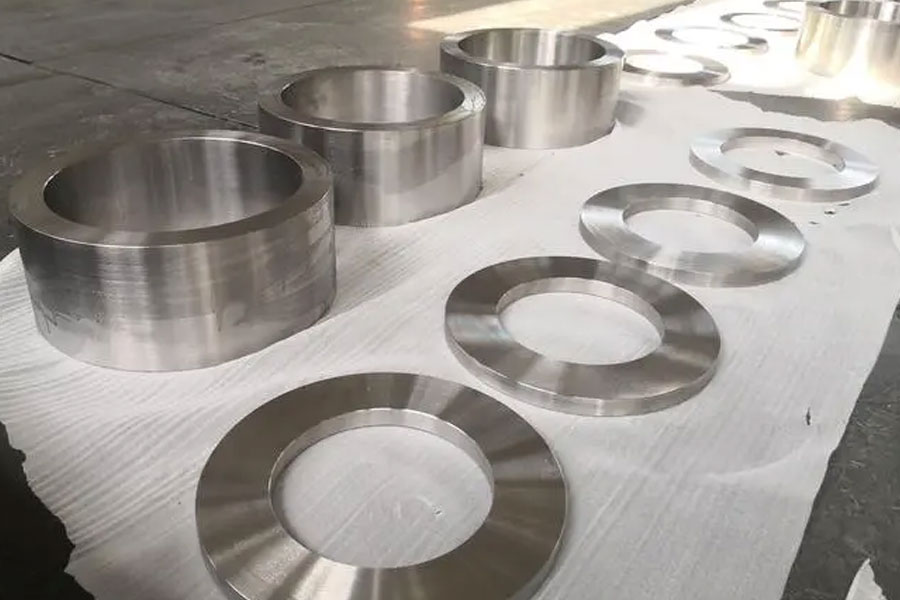
Since the 1990s, with the rapid development of computer technology, laser direct manufacturing technology has gradually become a research hotspot in the manufacturing field. There are two methods in laser direct rapid forming technology that can be used to directly manufacture metal parts: Selective Laser Melting (SLM) and Laser Engineered Net Shaping (LENS). Research on laser direct rapid forming technology for large titanium alloy structural components abroad is mainly concentrated in the United States. Between 2002 and 2005, AeroMet in the U.S. realized the application of laser direct rapid forming of titanium alloy structural components in aircraft. In 2001, AeroMet began small-batch trial production of titanium alloy secondary load-bearing structural components for Boeing’s F/A-18E/F carrier-based joint strike fighter, including engine nacelle thrust tie rods, wing rotary folding joints, spars, and ribbed panels. In 2002, they formulated the “Ti6Al4V Titanium Alloy Laser Rapid Forming Product” aerospace material standard (ASM4999) and achieved the world’s first application and verification of laser rapid forming titanium alloy secondary load-bearing structural components on aircraft such as the F/A-18. In the aerospace field, NASA’s Marshall Space Flight Center in Huntsville, Alabama, applied selective laser melting technology in 2012 to manufacture complex metal parts for various aerospace engine prototypes. Laser direct rapid forming and metal spinning technology is also frequently used for the repair of titanium alloy parts or molds.
In China, research on laser direct rapid forming technology for titanium alloy structural components began in 2001 and has since received significant attention from major government science and technology management departments. Significant progress has been made in research on laser rapid forming manufacturing processes for titanium alloy structural components in aircraft and engines, the development of complete sets of equipment, and the key technical challenges of engineering applications.
The Laser Materials Processing and Manufacturing Technology Laboratory at Beihang University (Beijing University of Aeronautics and Astronautics) conducted research on the engineering application of laser rapid forming technology, focusing on complex secondary load-bearing titanium alloy structural components for aircraft. They manufactured nearly 200 TA15 titanium alloy corner boxes and completed the “Laser Rapid Forming TA15 Titanium Alloy Structural Component Installation Review” for a specific aircraft. The first laser rapid forming TA15 titanium alloy structural component successfully passed all application tests on that aircraft, making China the second country after the United States to master the engineering application of laser rapid forming technology for complex titanium alloy structural components in aircraft.
Under the leadership of Wang Huaming, the “Laser Forming Technology for Large Complex Integral Titanium Alloy Components for Aircraft” project at Beihang University produced the most complex and large titanium alloy high-performance integral components to date in China’s aircraft industry. These components have been practically applied in the development and production of various large aircraft, positioning China as one of the few countries worldwide to break through and apply laser rapid forming technology for large primary load-bearing titanium alloy structural components in aircraft.
Compared to its application in the aviation field, laser direct rapid forming technology in China’s aerospace sector is still in its early stages. In fact, selective laser melting technology can be effectively used to achieve high-precision machining of hard-to-process materials, complex contoured structural components for aerospace liquid and solid rocket engines, and lightweight thermal protection structures for various weapon systems.
Using laser direct rapid forming technology to manufacture integral titanium alloy structural components for aerospace applications offers advantages such as high material utilization, minimal machining allowance, short production cycles, and high flexibility. However, challenges such as preventing deformation and cracking during the laser rapid forming process, controlling internal quality (including internal defects, grain structure, and microstructure), and managing mechanical properties remain technical bottlenecks that constrain the development and application of this technology for large integral titanium alloy key structural components.
In summary, while titanium alloy precision hot forming technology continues to advance, it also faces some technical challenges. The engineering application scope of large integral titanium alloy components remains relatively limited. However, with the rapid development of the aerospace industry, titanium spinning technology is expected to enter a new phase of development. Given the outstanding advantages of titanium alloys and precision hot forming technology, their combination will play an increasingly significant role in the future of the aerospace industry. The main future development directions include:
- Precision forming of large or ultra-large complex (thin-walled) structural components with low cost and engineering application.
- Integration of computer simulation (simulation), CAD/CAM technology, CNC technology, and precision forming technology to provide technical pathways for the forming of new aerospace components.
